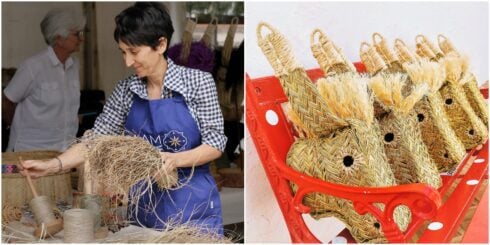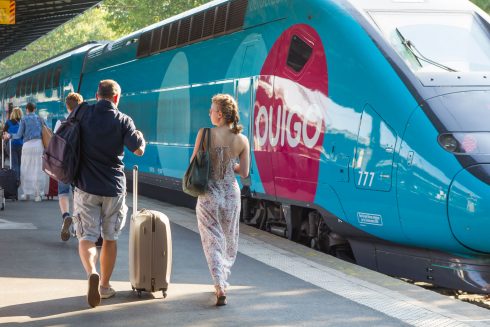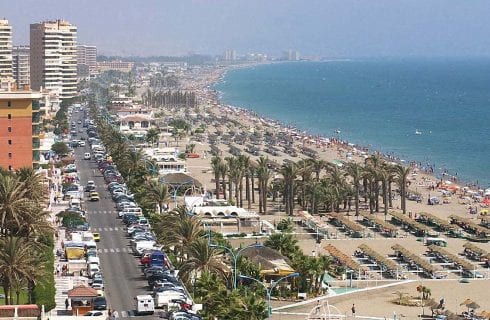By Vernon Grant and Mark Roulston
The name Alhama is taken from the Arabic word al-hamman, which means thermal baths. But there is more to these towns than hot water. The Olive Press gets steamed up over what is on offer in both Alhama de Almería and Alhama de Granada
Alhama de Almería
I have on occasion found attending thermal baths to be a disturbing pass time.
The first time I visited a well known balneario in the region I was mystified by what I saw.
In a scene reminiscent from the film Cocoon, I witnessed a white-clothed lady appear from below stairs. She blew a whistle and the dozens of elderly Spanish customers who had gathered noisily in the lobby simply followed the woman downstairs in total silence.
I did not hang around to find out if they came back up from the basement looking ten years younger.
I confess I was dubious about my first communal bath in Spain. In my experience, shared baths are either a) for lovers in the first flight of fancy or b) a necessity in times of water shortage!
The whole idea of sharing the same bathing water as total strangers seemed to me to be a repugnant one. I was assured that it would ease my aches and pains. Relieve the sore neck gained from too many hours spent on the computer.
I confess the experience was, at the time, more pleasant than anticipated.
Almería is famous for being a province that has little rainfall. It is slightly ironic, therefore, that the area of Alhama de Almería is blessed with more than an abundance of curative water.
For example, the Balneario San Nicolas, is a little over 20 kilometres from the centre of Almería. It is situated more than 400 metres above sea level on the hillside of the Gador mountain and close to the town of Cerro Milano.
The spa building itself is built over the valleys of Andarax and Nacimiento. The Hyper thermal natural waters have a temperature of 46 Celsius and contain bicarbonates, sulphates, calcium, magnesium and iron.
This spa offers therapeutic remedies for many ailments including rheumatism, arthritis, anxiety, obesity, stress and many others. The methods used include not just thermal baths but also hydro massage, sauna and jet spray.
Such traditional spas are classified as either sedative or stimulant depending on the mineral content of their waters. Sedative waters are typically used to treat respiratory, heart and circulatory problems as well as nervous disorders. Waters described as stimulating improve the skin and help with depression.
Almería province is home to thousands of ex pats. Many have gone to live there because they suffer from arthritis. The consistently warm climate in Almería province is said to ease such pain.
Joe Davison often visits Balneario San Nicolas but his ailments are self inflicted.
Born at another time, in another place, Joe would have been a gunslinger. In Almería he has to make do with regular visits to the Mini Hollywood theme park at nearby Tabernas. Here grown men pretend to be Clint Eastwood. He says: “My mates never believe me but being a cowboy for the day is exhausting. I have suffered many bumps and bruises in the process and it is great that the rejuvenating water of the Spa is so close by.”
Another popular Almería based spa was renovated as recently as 1984.
The 18th century building that is home to the Sierra Alhamilla Balneario was originally built on Roman and Arabic ruins. After more than eight years of renovation it is now as impressive as it was in medieval days and its location in the Alhamilla mountainside is splendid.
The hot spring water is still used by the local villagers to wash their clothes.
The natural water temperature is 58 Celsius.
As at Alhama de Granada, there is, beside the spa, a natural source of constantly flowing thermal water. Tourists arrive by the coachload to dip their toes in the curative waters. Although fewer in number than at locations such as Lanjaron, visitors also arrive with empty bottles and take away litres of the liquid they hope will cure them of specific ills.
Unlike some other Spa locations, there is here a restaurant with an outdoor terrace, which is popular at weekends.
The Spa offers specific remedies for digestive troubles involving ulcers, kidney and bladder stones, gout and rehabilitation after injury. The treatment methods include not just drinking the local water but also massage baths, jets, inhalations and mudpacks.
There can be little doubt that such methods work. One only has to see how many such venues have regular clients. It is a myth that all the customers are elderly although, of course, you are guaranteed to see more pensioners than youngsters. After all, many of the ailments being treated usually only occur in later life.
As with so many aspects of cultural life in Spain, it was the Romans who first brought the idea of curative bathing to this country. Would be cowboy Joe Davison is adamant younger people should visits the baths at Alhama de Almeria. He says: “Thermal bathing is good for people of all ages. Prevention is better than cure and when they come and stay with me in Tabernas, I encourage all my young friends to take a shot at it.” VG
Alhama de Granada
Por eso mereces, rey, una pena muy doblada: que te pierdas tú y el reino, y aquí se pierda Granada ¡Ay de mi Alhama! (For this, King, double the shame: for you yourself lost your kingdom and it is here Granada will be lost. Alas, my Alhama!)
MY first impressions of Alhama de Granada were not favourable. We stopped off here during the three-hour-long drive home to Málaga from Granada along the A335. We got out of the car at the roundabout in the modern part of town, looked around and got straight back in. Maybe it was the intense heat, maybe the hangover after a heavy night on the tapa, but I did not like the place.
Fast forward three years and I am beginning to appreciate why the mother of Nasrid king Abd al Hasan uttered those words after Alhama de Granada fell to the Ponce de Léon led Christian forces in 1482. The loss of this strategic town isolated Granada from Málaga – therefore North Africa – and eventually allowed for the Christian Kings Fernando and Isabel to march into Granada ten years later and end centuries of Moorish rule in Andalucía.
Alhama de Granada nestles among rolling fields of wheat and almond trees at the edge of the Sierra de Tejada, Almijara and Alhama Natural Park. Although it sits only 50 kilometres or so from Granada and the coast, it is an unspoilt gem. If driving from the province’s capital do not bother with the more modern part of town and head directly uphill to the historic centre. Wander around the old town’s narrow streets and they will eventually lead you to the Plaza de la Constitucíon. Here, most of the bars and restaurants are found and, beyond the tourist information office and police station, the Iglesia del Carmen. Formerly a Carmelite convent, the 18th century church homes the town council.
If churches are not your thing head to the most celebrated eatery in town. Just off the Plaza de la Constitución on Calle Las Peñas, La Seguiriya serves an exquisite Bacalao Pil Pil (Cod in a creamy garlic sauce). If you plan to spend the night in Alhama, the restaurant also doubles as an attractive hotel with double rooms overlooking the gorge.
I think of Alhama de Granada as a miniature Ronda, except with less day trippers. Visitors to that more celebrated Andaluz town go to peer over the famous Puente del Paco bridge to the trickling waters of the river, 150 metres below. Although Alhama de Granada also balances precariously on a gorge it is slightly less dramatic. For the vertigo inducing Wow! factor go to Ronda; if it is bathing in thermal waters then head north out of Alhama de Granada.
Found a kilometre or so out of the town, the Hotel Balneario sits atop the original Roman – and subsequently Moorish – hot baths. People visit the modern hotel to use the soothing waters. Naturally heated to 47 Celcius, the sulphate rich H20 is said to treat all manner of ailments: arthritis, gout, bronchitis, laryngitis and sciatica among them.
If you want to visit the ancient spa room then ask at the hotel reception. For a small fee (one euro, daily 2-4 pm) they will give you a guided tour. You are led down past the modern baths and through a large door into the original thermal water spas, which date back to 1BC and the Roman occupation.








